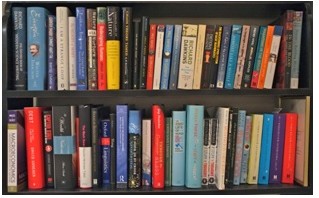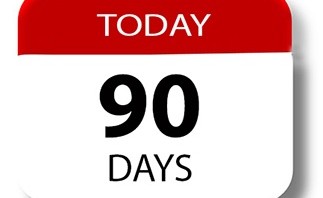Decisions are the fuel that propels organizations forward. ~Joel Trammell
I once read a quote a bout decision making that has stuck in my mind: “A good decision made too late is just that, too late.” The complexity of work (the number of decisions that need to be made) dramatically increased when we moved from the industrial age to the information age and has continued to escalate along with the increasing rate of change. Unfortunately, for some leaders, this avalanche of decisions has been more paralyzing than liberating.
bout decision making that has stuck in my mind: “A good decision made too late is just that, too late.” The complexity of work (the number of decisions that need to be made) dramatically increased when we moved from the industrial age to the information age and has continued to escalate along with the increasing rate of change. Unfortunately, for some leaders, this avalanche of decisions has been more paralyzing than liberating.
In some cases, leaders know that more options will be coming down the pike so they hold-off making a decision, believing that a “better option” may soon be available. For others, with so many options from which to choose, they fear making a decision that may not be the absolute best choice. So they too, hold-off. Still others delay because they believe they need 110% support from every person they have involved in making the decision.
In the meantime, while a multitude of decisions hang in the balance, the organization doesn’t move forward. It may even fall behind while competitors leave them in the dust.
I’m not suggesting that leaders need to make snap decisions, on the contrary; but I am arguing that they need to make decisions if they want to move their organization forward.
Joel Trammell, a former CEO provides his approach to what he calls decision triage. He sorts decisions into three categories
Insignificant choices that present a chance for improving skills is the first category. Trammell says that certain decisions, on their own, won’t affect the organization overall in a considerable way. Yet the process of making such decisions provides an opportunity to coach and encourage the growth of staff. Once a staff member has made a well-reasoned decision, don’t change it, even if your solution would have been different. A different choice isn’t necessarily better, and you want staff to build confidence in their decision-making abilities.
The second category is easy but significant choices that require input. Sometimes the pros and cons of options are clear, but it’s important to get the decision right because it will affect the entire organization. These decisions require feedback and ultimately buy-in to get them right. If the decision affects multiple groups, engage all the appropriate staff to find out which decision they would make. They might have additional information or ideas that will help with making a better decision.
The final category is difficult and significant calls that require risk assessment. These decisions will make a difference to the organization and the options are complicated. It isn’t clear that you’re even considering all of the options. It’s crucial to gather input from staff, but ultimately, the leader has to make the final decision. Some are low risk because they are relatively easy to reverse. Leaders should make these decisions quickly to keep the organization moving. High risk decisions are almost impossible to reverse. These decisions require careful analysis and thorough discussion. Seek outside advice, assign a devil’s advocate, and conduct an official postmortem.
Begin your triage, start making decisions, and propel your organization forward.



